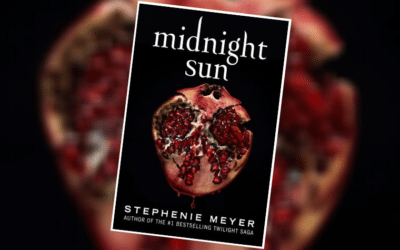My first laparoscopy for exploratory surgery was in 2002. My doctors couldn’t explain why I was in such pain with every period. The pathology after surgery was negative but the pain persisted. For those that don’t know, endometriosis is where the uterine tissue starts growing outside the uterus. Before the surgery I recall going to the ER and getting a shot of Demerol to deal with the pain at least 3 times a year. Tylenol and Advil did nothing for me. Vicodin barely made a dent.
Fast forward 15 years—yes, you read that right, FIFTEEN years—to last summer, when I finally had a hysterectomy. I was diagnosed with adenomyosis, the evil twin of endometrosis. They look like (but are different from) fibroids and can’t be diagnosed without a visual inspection. So until the hysterectomy, I approached everything like I had a fibroid. It wasn’t until I was in recovery when I heard the word adenomyoma, for which the only cure is removal.
Adenomyosis is a condition where the tissue that normally lines the cavity of the womb finds its way into the muscle of the womb. It causes the same symptoms as fibroids, including terrible lower back pain. They cannot tell until surgery when the abnormalities are visible that it is not a fibroid and when trying to remove the fibroid, the tissue doesn’t separate from the normal uterine tissue.
What is that pain?
This time, the literal “pain in my side” started acting out again the summer of 2013. I went to my gynecologist at UCLA about the pain and she said she was sure it was fine, but sent me for an ultrasound, which hurt like hell. I cried and I was miserable. At the follow-up with the gynecologist I was told, “You have a fibroid. It’s 3 cm so it can’t be causing you any pain.” This is a false statement, size doesn’t matter when it comes to pain. A normal ovary is 3 cm long.

The blue binder clip is 3cm long and a quarter is almost 3cm long. A goldfish is almost 3cm long.
When she said that wasn’t what was causing the pain, I went to my primary care doctor about the pain, which still hadn’t stopped and hadn’t moved. They sent me to a gastroenterologist and a pain management specialist. None of this felt right, and the pain never subsided and never moved. My primary care doctor questioned if work stress might be causing “phantom pain” or if I should be tested for fibromyalgia. I know my body and I’ve had enough “female exams” to know where the pain was so I figured out how, with my insurance, to change hospital systems entirely.
Changing doctors
During these four years I had primary care doctors from both UCLA and Cedars tell me that if I lost weight I would not be in pain. If I was more active, I would not be in pain. I had issues with overactive bladder and one doctor told me that I should drink less water to solve frequency…not “Oh, the giant fibroid might be pressing on your bladder let’s see what we can do about that.” More often than not, doctors ignored my complaints or brushed them aside, and made me question if what I was feeling was all in my head. I mention this because if you feel you aren’t being heard by your health care provider, find one who will listen to you. You deserve this.

Once at Cedars Sinai I found a fibroid specialist who was accepting new patients and made an appointment. I went to the exam. I don’t recall his name. And I’ll be honest, I don’t normally like male gynecologists because they can learn all they want about the female reproductive system in their books but they won’t ever understand what cramps feel like. By this time my 3cm fibroid has grown to 4.2 cm—it had been 5 months. His response wasn’t exactly what I had hoped for, but it wasn’t that I was crazy. He suggested I find a regular GYN and be treated there. He only took severe cases of fibroids and mine wasn’t severe enough but yes, mine could cause the pain I was having.
I finally get to my current GYN and we take a few steps to monitor the growing fibroid. By this point I’m in fairly constant pain, it’s not a 10 all the time, but it’s a dully annoying 5 or 6 with occasional stabs of 10; I do what I can socially. I probably canceled on things or declined invites to something. I was tired, in pain, and honestly exhausted. It’s hard to put on a smile when you hurt.
Mirena IUD
By now I had become one with the pain, and I had decided to dub the fibroid “my horcrux.” That was the only other logical reason for pain I was in. In 2015 the horcrux was now 8 cm. The average uterus pre-childbirth is about 8 cm high and 5 cm wide. In Nov of 2015 New GYN decides that we try one more thing before we go down the surgery route and we decide to put in an IUD that will last for 5 years.
It was reallllly painful. I went home and took Vicodin. It was worse than cramps or kidney stones. It took about 2 weeks, but I felt like I had my life back. It was fantastic. I am a huge proponent of IUDs, I got to enjoy so many things. Until October of 2016.
Ultrasounds that hurt
Almost a year later, the dull pain had started again, slowly at first. Then came the spotting on a drive after Thanksgiving. By Christmas I was lethargic, the bleeding was light but manageable. The first week of January 2017 I was in Orange County for a meeting for work and trying to work through pain but not feeling great. I had just returned to my hotel room and used the bathroom when I noticed blood and something poking me. The horcrux had grown, dislodged the IUD, and pushed it out. It was as gross and scary as it sounds. I called the after hours nurse/doctor line and was told that I needed to use alternate form of contraception. I explained that that was not the issue. I needed to know if I had to go to the ER, if I was hemorrhaging, if I was dying. I told her that there was something attached to it and I thought it was part of my uterus. She said, “It’s not. you’re fine.” I was worried I would die in my sleep.
I had a previously scheduled ultrasound the following Monday morning to check the size of the horcrux and there are precautions hospitals have to take when one is bleeding. It was 6:30 am, and I use humor to deal with stressful situations. so I told the tech, “Um, so I think you need to take precautions and make the bed safe because it’s a Daniel Day Lewis movie going on in here…There will be Blood…”
He looked at me and said “What?” I recount the story and he told me to “Wait here.” He returned in what was basically a hazmat suit or what the government officials in E.T. wore and covered the gurney in lots of stuff. I started singing Taylor Swift, (“cuz now we got bad blood…”) and he laughed and told me, “You’re in awfully good spirits about all of this.” I shrugged and said “What else am I going to do?”
When I finally got in to see my GYN after the ultrasound, I brought the IUD that had fallen out of me to show her. At first she was unconcerned, assuring me it was just a blood clot. I showed her the IUD, her eyes got really big, and she told me to lay back. Guess who’s suddenly concerned? I’m fine, it was part of my uterus, but I’m fine. She also had my ultrasound results and told me my horcrux was about 10 cm.
That day in January we decided that the next step was surgery. I’ll tell you that story in another post. What I want you to take away from this one is:
-
You’re not crazy, the pain is real.
-
Trust your body. If your doctor isn’t listening to you or dismissing your concerns, find one who will.
-
Female pain during periods or sex is not normal. Don’t just live with it. Don’t be ignored.
-
If you think you have endometriosis or adenomyosis or fibroids, there are support groups. Ask around, you’ll be surprised who has been affected.
-
For an unknown reason, women of color, specifically black and African-American women are affected by fibroids more than any other demographic.
-
Doctors misdiagnose adenomyosis for fibroids.
-
Fight for a healthcare plan for everyone and one that includes women’s healthcare. Planned Parenthood helped me when I didn’t have access to insurance.




